‘Timeless’: Gainesville Fine Arts Association celebrates 100 years of supporting the arts
Eleanor Blair had never heard of Gainesville when she packed into a Volkswagen Beetle with four other people and hitchhiked up Florida’s west coast for a rock concert.
In spring 1971, before Interstate 75’s southward extension was complete, the drive north from Sarasota took nearly five hours. So, when the concert ended up canceled, Blair decided she’d stay a while.
Crashing on the floor of a house in Duckpond — the historic neighborhood that now holds Blair’s at-home art studio — her first introduction to the city’s charm was Devil's Millhopper, a sinkhole distinguished by its lush plant life and sparkling blue-green water. She fell in love almost immediately.
Armed with her 1951 Plymouth, $40, a lamp, bag of clothes and box of paints, Blair made the sudden move to Gainesville. She had recently graduated from New York's Cooper Union arts school. A hitchhiker she met along University Avenue suggested Blair visit the Artisans’ Guild gallery, where she was then invited to join the Gainesville Fine Arts Association, another local group that held monthly meetings and shows.
All alone in a new city, she took their advice.
“[I was] a complete stranger who basically hitchhiked into town and didn’t know a single soul,” Blair said. “Within months, I’m teaching an art class and meeting people who become my friends when we’re all grown up.”
Blair, now 76 and a landscape artist who works primarily in oil, is one of many who stumbled across GFAA during a pivotal moment in their art careers — finding a sense of community difficult to come by in a profession known for its solitude.
This year, the Gainesville Fine Arts Association is celebrating its centennial, honoring a 100-year history that began in 1923. Now at nearly 400 members, GFAA is one of the oldest continuously running arts organizations in Florida, a significant element of the city’s rich, often forgotten visual arts scene. To honor this milestone, the GFAA gallery, located at 1314 S Main St., put together an exhibit that will run until Nov. 18.
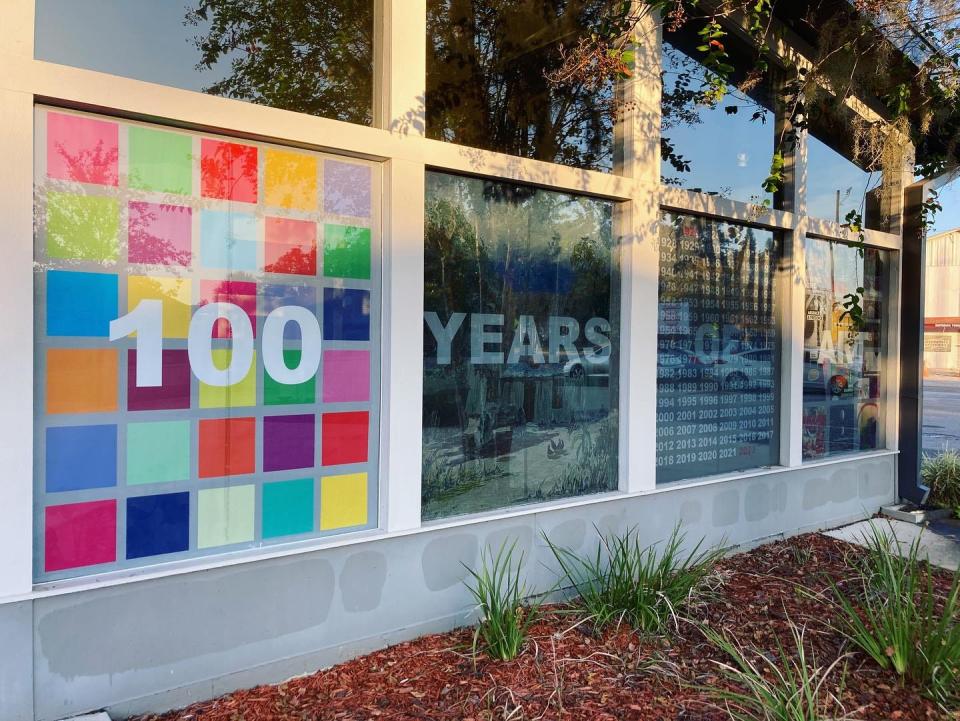
From its very first meeting, GFAA has been about fostering a study of art, a goal achieved through workshops, exhibitions, networking opportunities and mentorship.
For Blair, who joined the organization in her early 20s, the guidance and support she received from longtime members were paramount in building a life in Gainesville. Two women in particular, Sandy Paganini and Sarah Herndon, took Blair under their wing, she said, setting her up with a gig teaching children’s art classes on Saturday mornings.
Paganini and Herndon also paid Blair $25 per month — just under $200 today — to draft GFAA’s monthly newsletter on a manual typewriter, then hand address letters to each of the association’s 125 members.
“You don’t have to prove that you are worthy of membership,” she said. “If you say you’re interested in art, you want to do art, you want to learn about art, you want to meet other artists, whatever — it’s completely arms wide open.”
But it hasn't always been easy for the group, as it's had to find creative ways to stay afloat in a constantly changing landscape.
Katy Lemle, GFAA’s gallery and executive director, is perhaps more familiar with this ongoing cycle of adaptation than anyone.
When she was hired as gallery manager in 2019, Lemle was the sole staff member at GFAA — an organization that has always, and continues to be, largely volunteer-run. Over the past four years, she’s spearheaded most of the gallery’s administrative tasks; watched the team slowly grow with the addition of a part-time operations assistant and rotating pair of federal work-study employees; and was promoted to GFAA’s first executive director.
Creating a centennial exhibition
During early talks of putting together a centennial exhibit, GFAA considered finding a grant to fund the hiring of a historian or curator — someone who could devote themselves full time toward parsing through records, searching archives and collecting pieces of art from the past 10 decades.
Instead, the task fell to Lemle, a yearlong quest to chronicle GFAA’s expansive, mostly unknown history.
Her research took her to the University of Florida’s library, where she found a book by one of GFAA’s original founders, providing a snapshot of the association’s first 20 years. After emptying a storage unit left behind by ghosts of leadership past, she came across a goldmine of old newsletters, brochures and newspaper clippings.
Little by little, Lemle was able to piece together a timeline featuring a series of milestones that began with four women meeting at each other’s houses to talk about art.
“It’s been very informative to be able to see, through the years, how it’s changed — but also the things that have carried it this far,” she said.
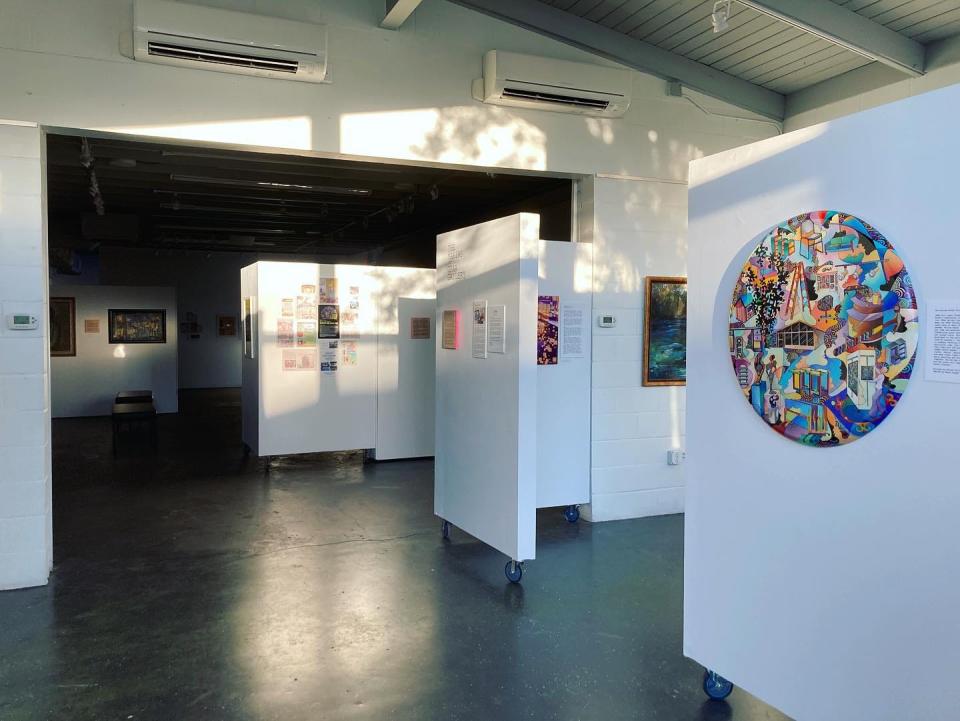
The resulting exhibit, “100 Years of Art,” immerses viewers into the storied history that brought GFAA to where it is today. The walls of the gallery seem to come alive — plastered in old flyers and articles, alongside artwork of all mediums spanning every decade since the association’s creation. Walking through is like traveling back in time.
The social landscape GFAA was born into in the early 20th century was a tumultuous one. In 1923 — the year GFAA was founded — downtown Gainesville was the site of a Klu Klux Klan rally, with many participants then partaking in the massacre of a thriving Black community in nearby Rosewood. The association later survived World War II, bouncing back even after waning membership.
Lemle said she hopes visitors understand the significance of perseverance.
“It definitely has waxed and waned, had ebbs and flows. It got down to only a handful of members every once in a while,” she said. “[We’re] letting the community know that we exist.”
The ‘founding mother of Florida art’
Geographically, Gainesville doesn't lie at the center of Florida’s artistic history, with the exception of its music scene. The artists who escaped New England’s winters during the 20th century often settled in coastal cities like Miami and St. Petersburg, where the weather was warmer.
Somewhat off the beaten path, Gainesville was instead best known for holding the state’s flagship university, attracting hundreds of prospective students and even more rowdy football fans to campus each year. One of these newcomers was Frederick Buchholz, who began coaching football at Gainesville High School shortly before the start of World War I.
But it was Emmaline Buchholz, Frederick’s wife, who reinvented the state’s artistic legacy — establishing the Florida Federation of Art in 1927 and growing to become one of the “founding mothers of Florida art,” according to historian Alfred Frankel.
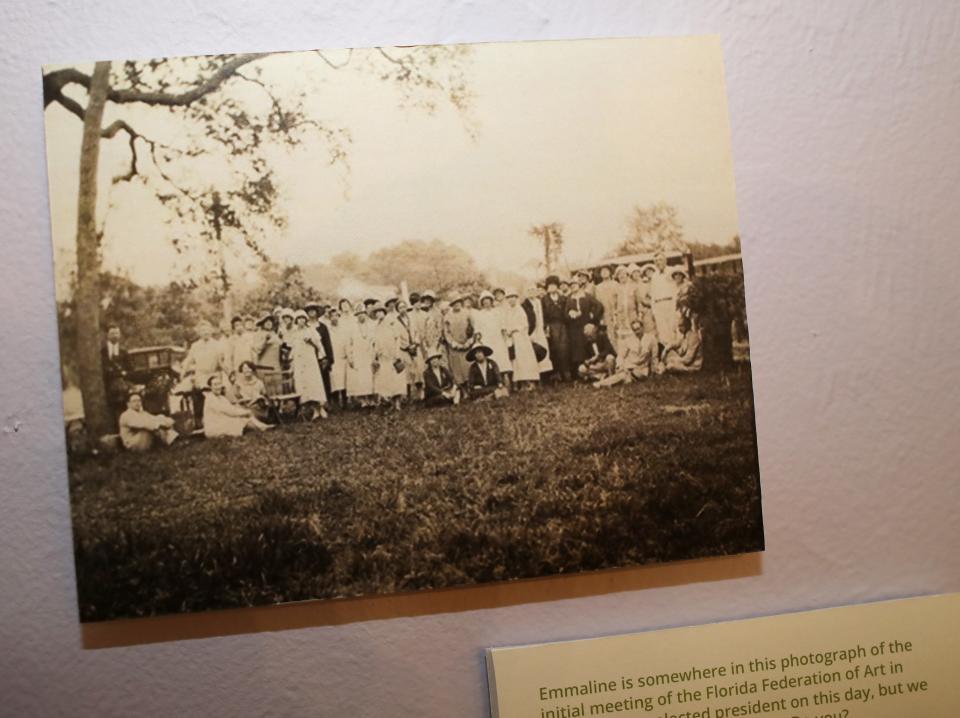
More: Gainesville-based immigrant advocates celebrate third anniversary at Matheson Museum
“There were plenty of men,” he said, “but it was the women who really got things going.”
Frankel, 85, has spent the past 40 years documenting Florida art — a Hercules-like undertaking that included the writing of “Artists of Old Florida 1840-1960,” a city-by-city encyclopedia of art in the Sunshine State.
The story of Gainesville art, as told by Frankel, begins with four women — Emmaline Buccholz, Emily Fielding, Nelly Trezevant and Mrs. W. S. Dorsey — studying and scrapbooking their favorite paintings on Saturday afternoons. Though all served on the art committee of the Twentieth Century Club, Gainesville’s women’s club, only Buccholz was an artist herself.
In 1923, the women transformed their love of art into the Gainesville Association of Fine Arts, lighting a flame that set the entire community ablaze with support. One hundred years later, it has yet to be extinguished.
“They began something that nourished a need, and that need is in all of us,” Frankel said. “Art, in the broadest sense, is fundamental to life, but in the highest sense, it’s about the beauty and importance of everyday nature and joy.”
Buccholz captured this beauty in her own paintings, three of which — “Three Women Washing,” “Cracker House” and “Front Porch” — are on display as part of the “100 Years of Art” exhibit, on loan from the Matheson History Museum.
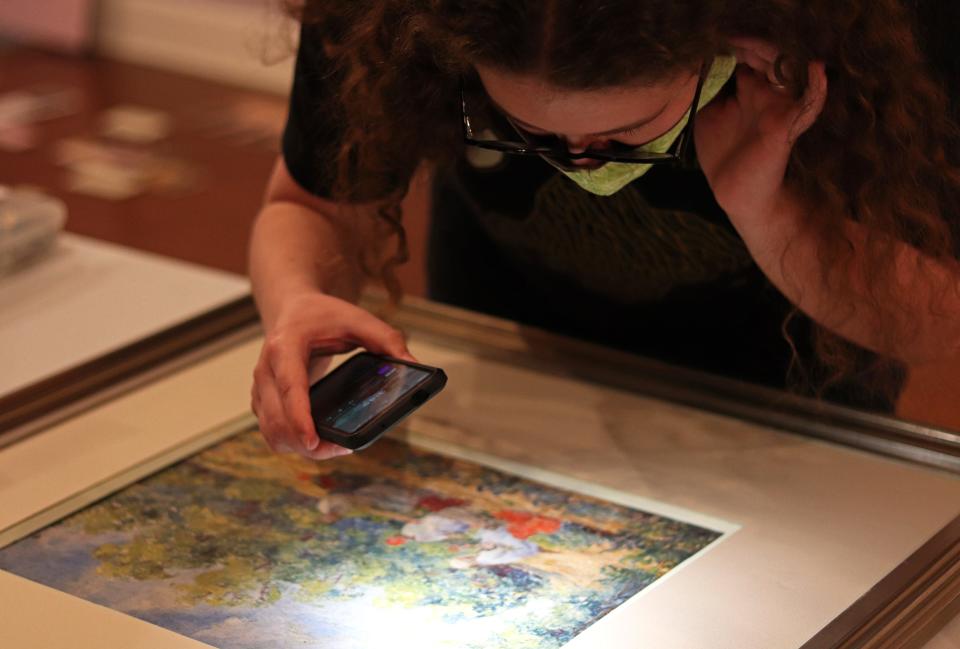
In search of a home
After originally meeting at the local high school, GFAA rented a three-room studio at 131 Union Street in 1934, beginning a pattern of bouncing around various Gainesville venues that would carry into the 20th century.
When Peggy Mixon, an 86-year-old Gainesville native, joined GFAA in the mid-1960s, the group was meeting in the Thelma Boltin Recreation Center. By the 1980s, meetings, exhibits and outdoor workshops moved to the renovated Thomas Center.
It wasn’t until January 2016 — over 90 years after GFAA first sprung to life — that the association acquired its first permanent gallery, a building tucked alongside the stretch of Main Street just past Depot Park. The effort was spearheaded by Karen Koegel, GFAA president from 2014 to 2018.
Equipped with a real estate license and lingering hopes of becoming an artist, Koegel, 76, moved back to Gainesville from Melbourne Beach in 2010. When she started attending GFAA meetings, the group was operating out of the Doris Bardon Community Cultural Center, a small space across the street from GFAA’s current gallery.
The group would also meet at libraries and a local church before moving to University Avenue.
“It was a tough thing to develop and grow,” Koegel said. “Having a place put you on the map.”
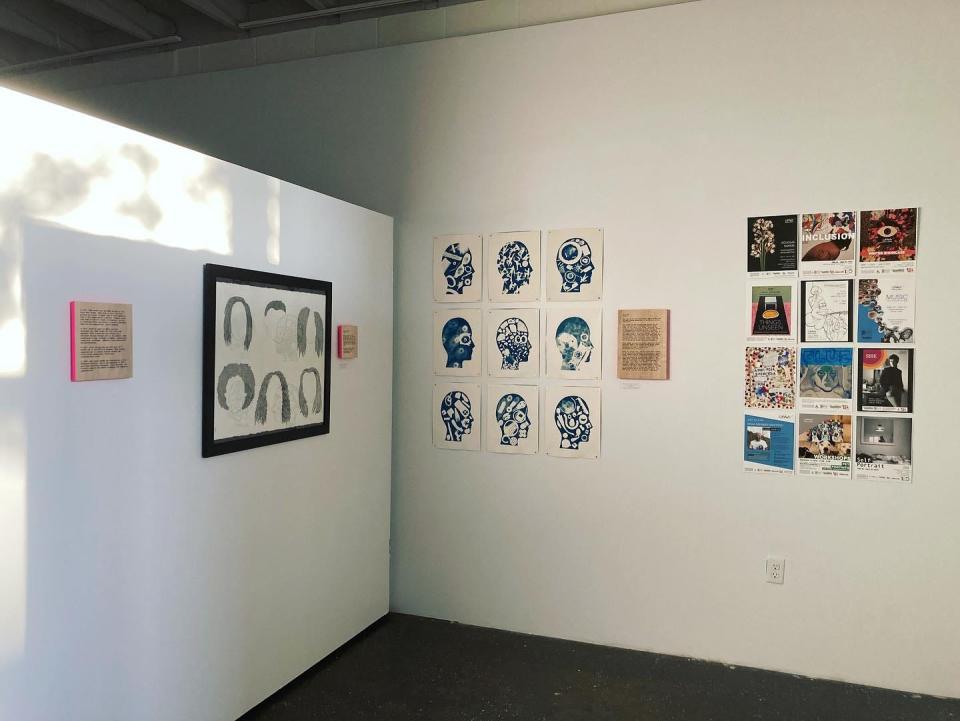
More: Ocala summit to host ‘Path of the Panther’ conservationist Carlton Ward Jr.
Koegel spent the next few months aggressively house-hunting. At Chamber of Commerce meetings, she’d stand up and state her case: “I’m president of GFAA, and we’re looking for a home.”
Usually, she was met with blank stares.
It wasn't until an early morning meeting in July 2014 that Scott Schroeder, a partner at marketing agency Liquid Creative, announced that he wanted to team up with an arts group to buy a physical space. Koegel chased him down after the meeting and handed him a business card.
Four months passed before Koegel heard back. Schroeder found a location − at the time it was a storage space owned by Republican state Sen. Keith Perry.
The group raised money for easels, tables and other gallery necessities through an auction hosted at Santa Fe College. In total, proceeds exceeded $11,000 — enough to fully furnish the building.
Signing the lease gave the organization new life. They began hosting workshops, live drawing classes and meetings for other artists to learn. By 2018, the organization nearly tripled its memberships and boasted more than 80 volunteers.
“These people cared,” said Alfred Phillips, the association’s first gallery director. “They jumped in, and they scrubbed and they painted and they built and they shopped. We couldn’t believe how much energy and effort people put in.”
Like Blair did over 40 years earlier, Phillips moved to Gainesville in 2013 without knowing a single soul. Searching for a change of pace, he quickly learned the hidden talents found around Gainesville.
The group once again hit another snag during the COVID-19 pandemic, which almost caused its closure again due to reduced membership. Though some numbers have increased, the group feels a partnership with the local government could provide more stability that would continue its storied history of perseverance and commitment to the arts.
“Its reason for being is a timeless and authentic reason,” said Sue Kelman, a former president of the group. “Supporting the arts in a community and having the arts be a part of the community.”
This article originally appeared on The Gainesville Sun: Gainesville Fine Arts Association celebrates 100 years

